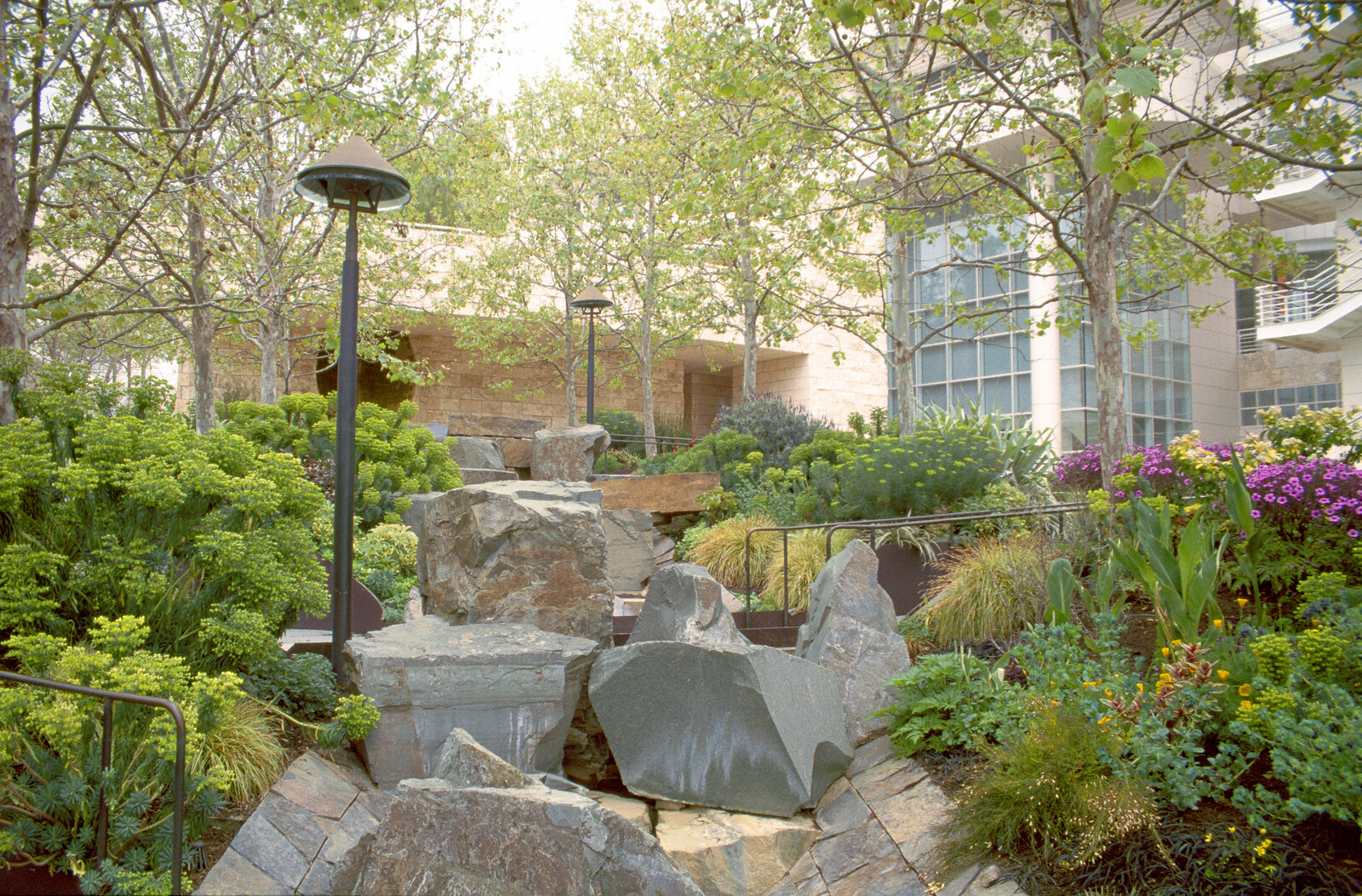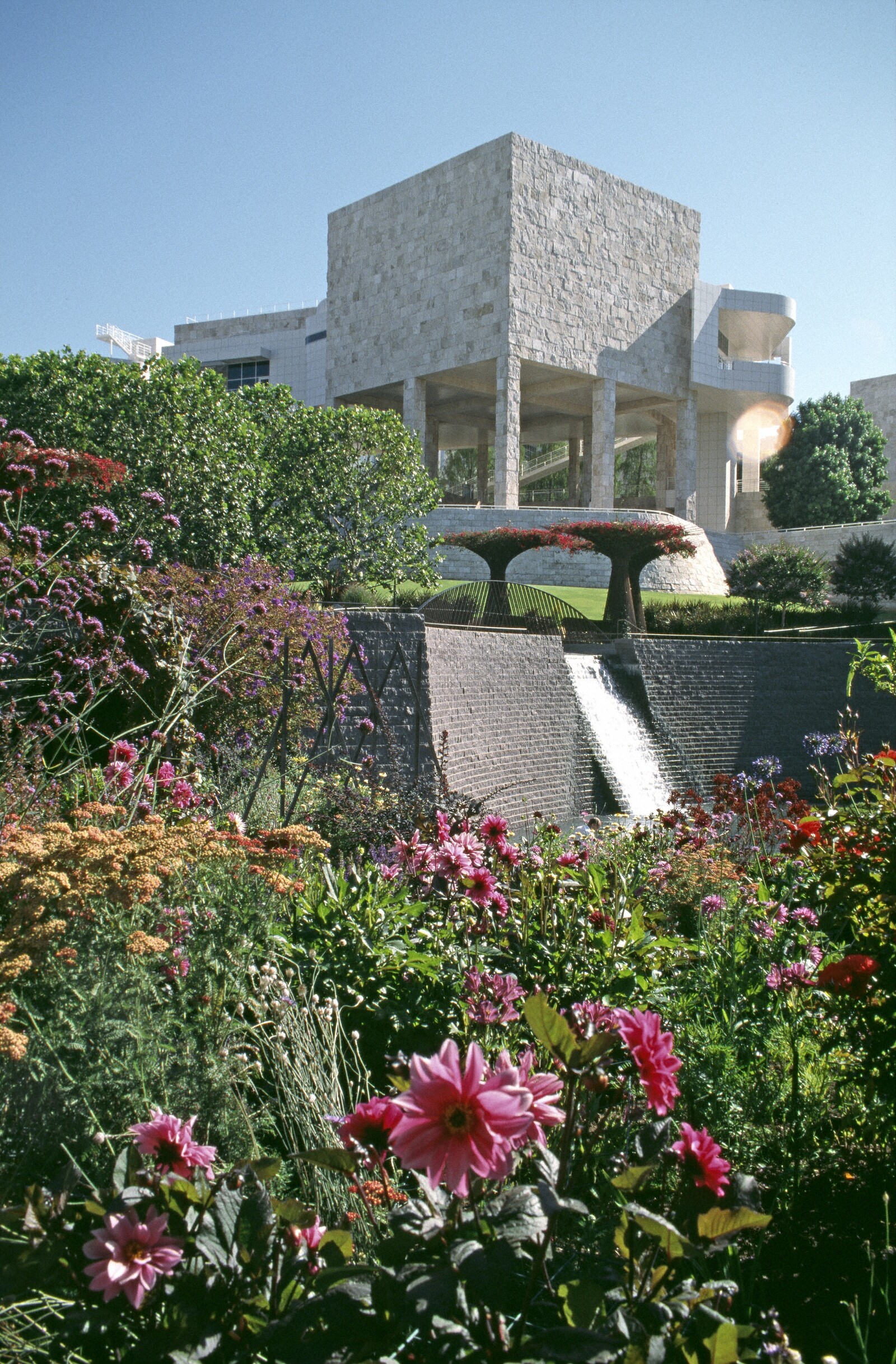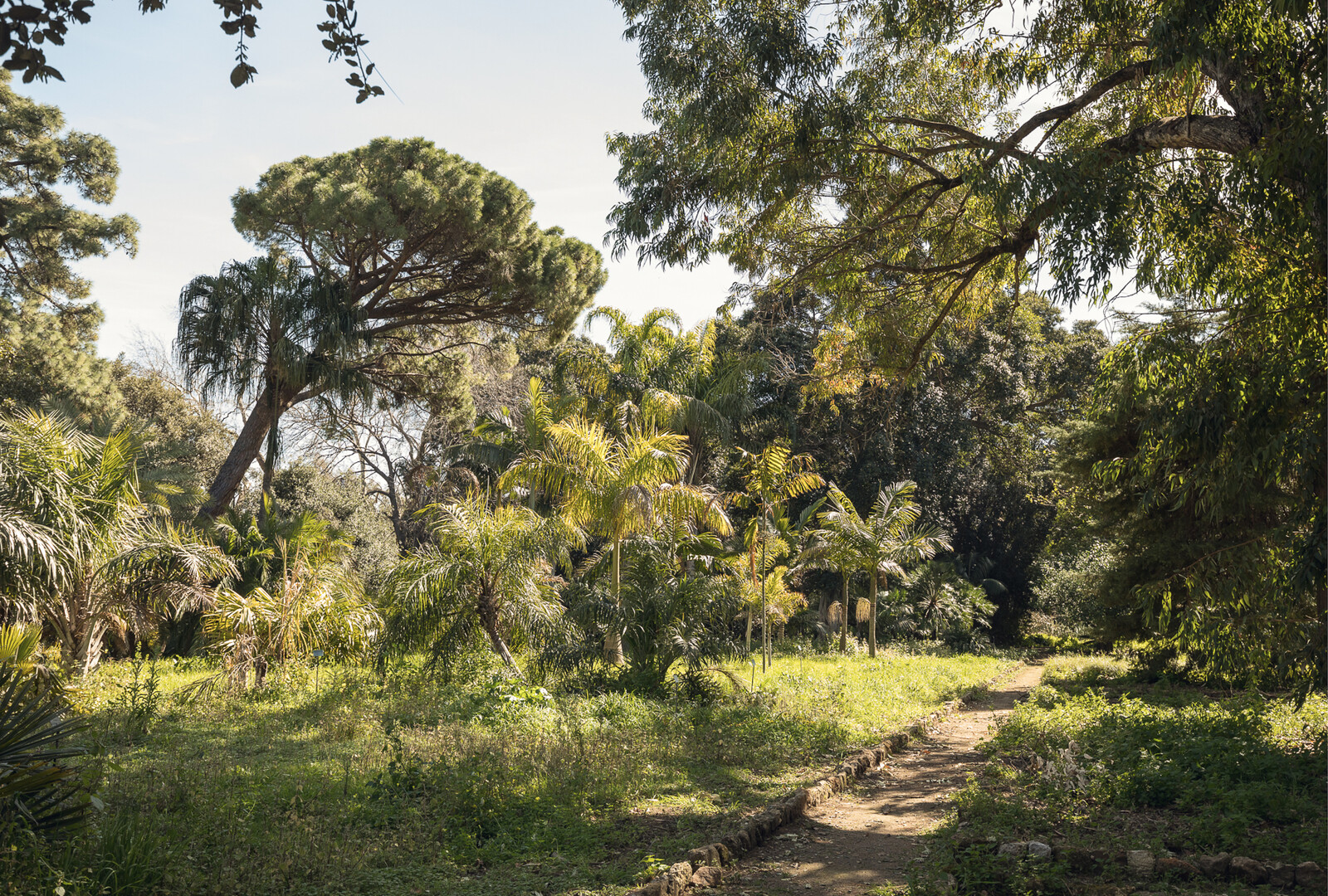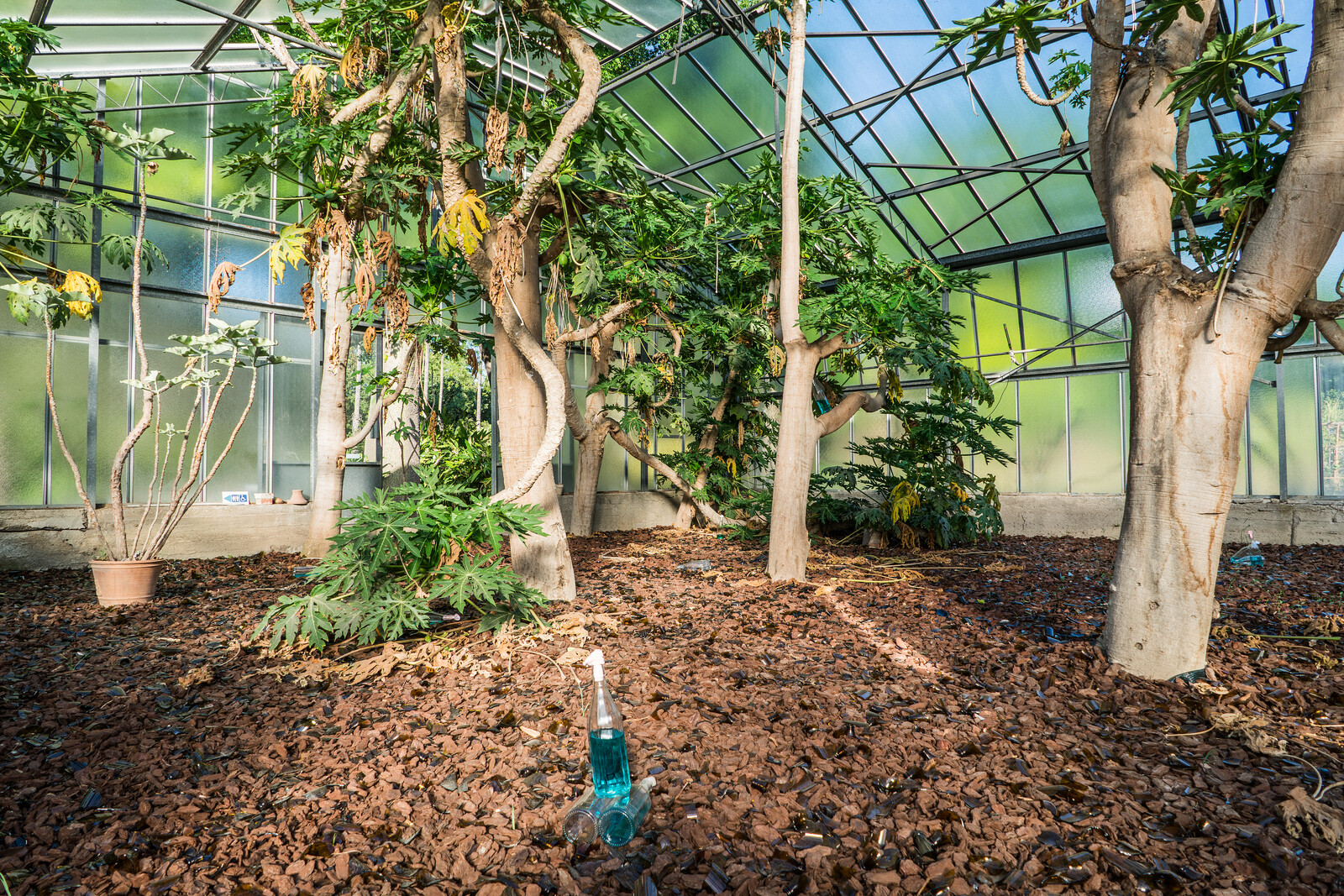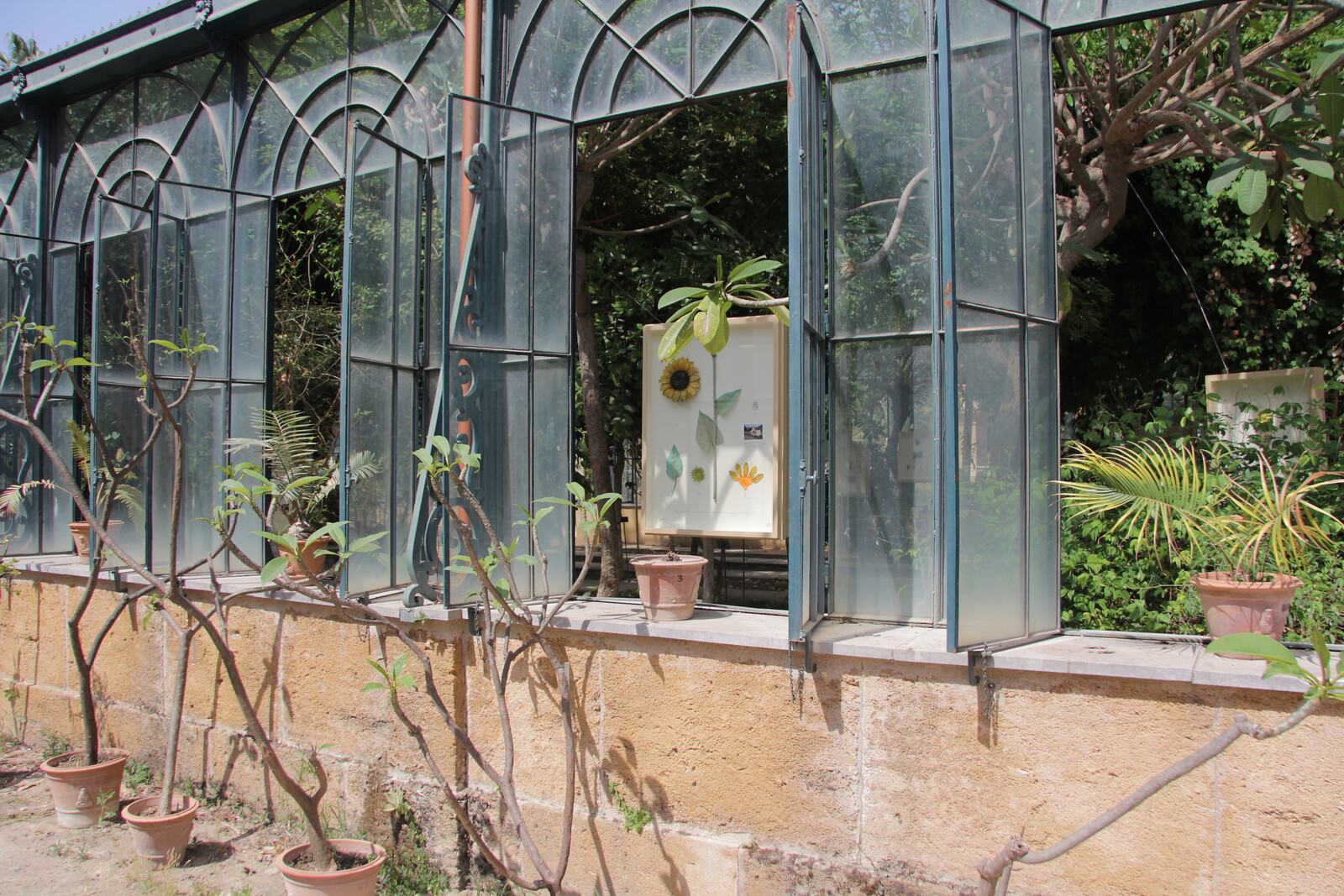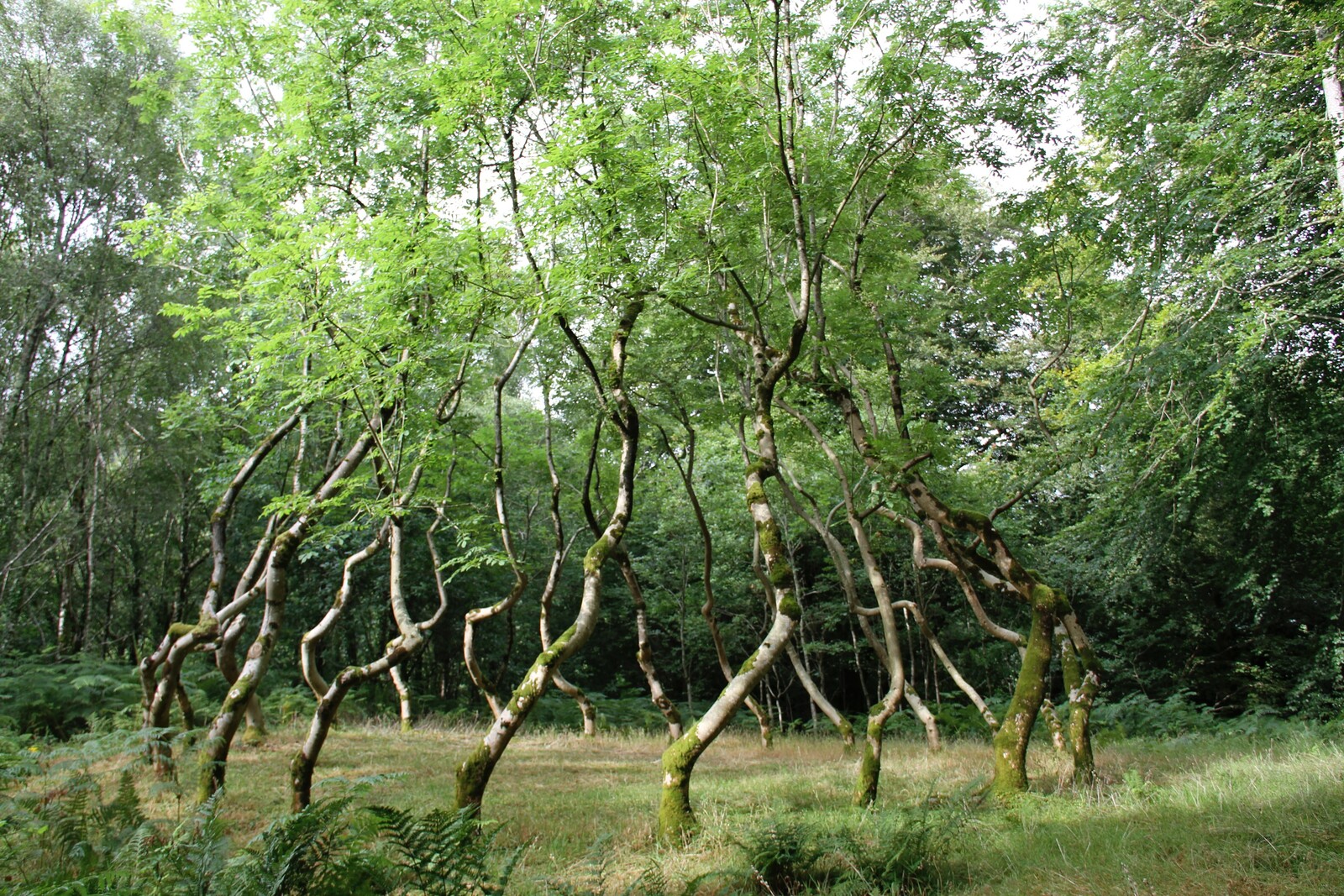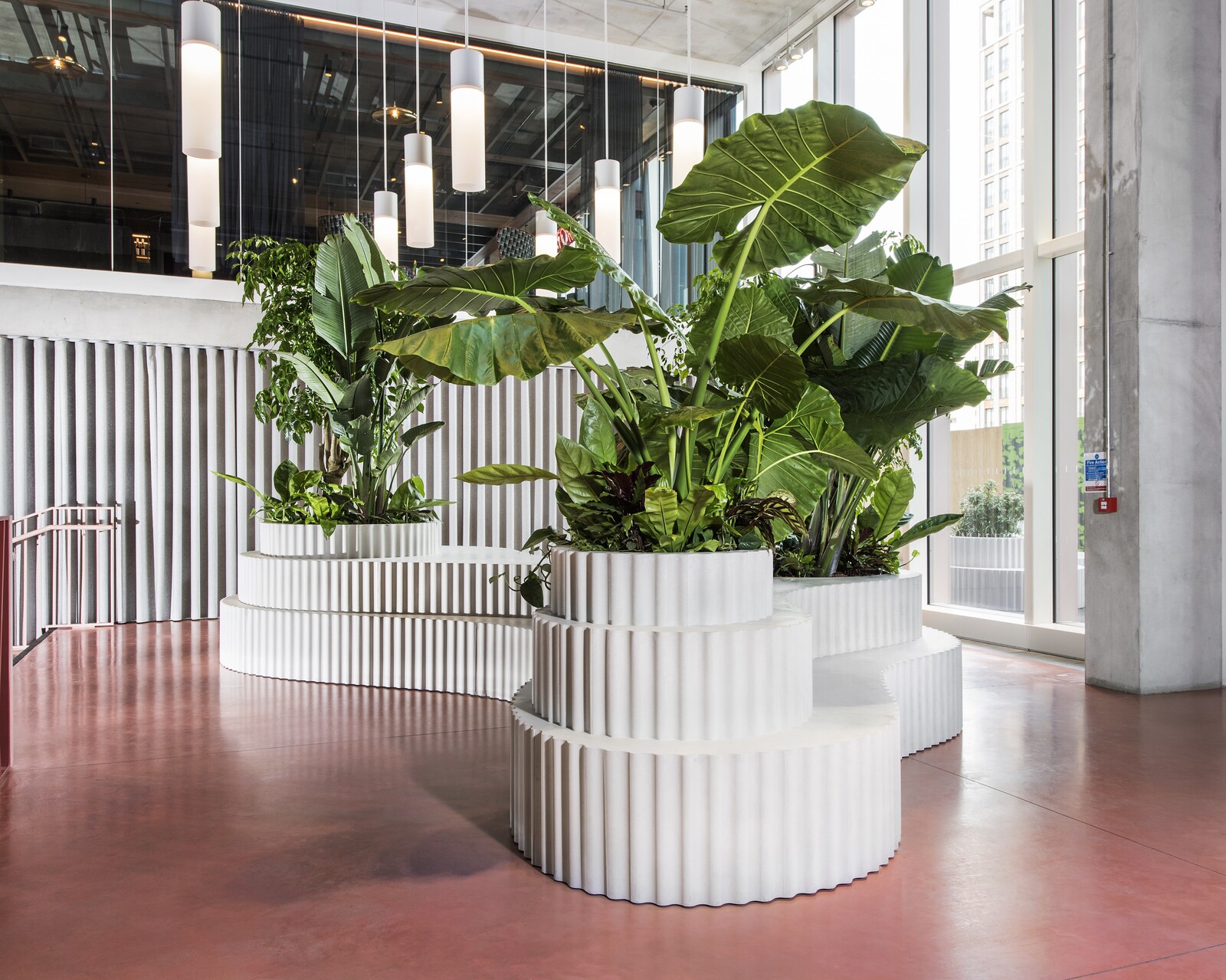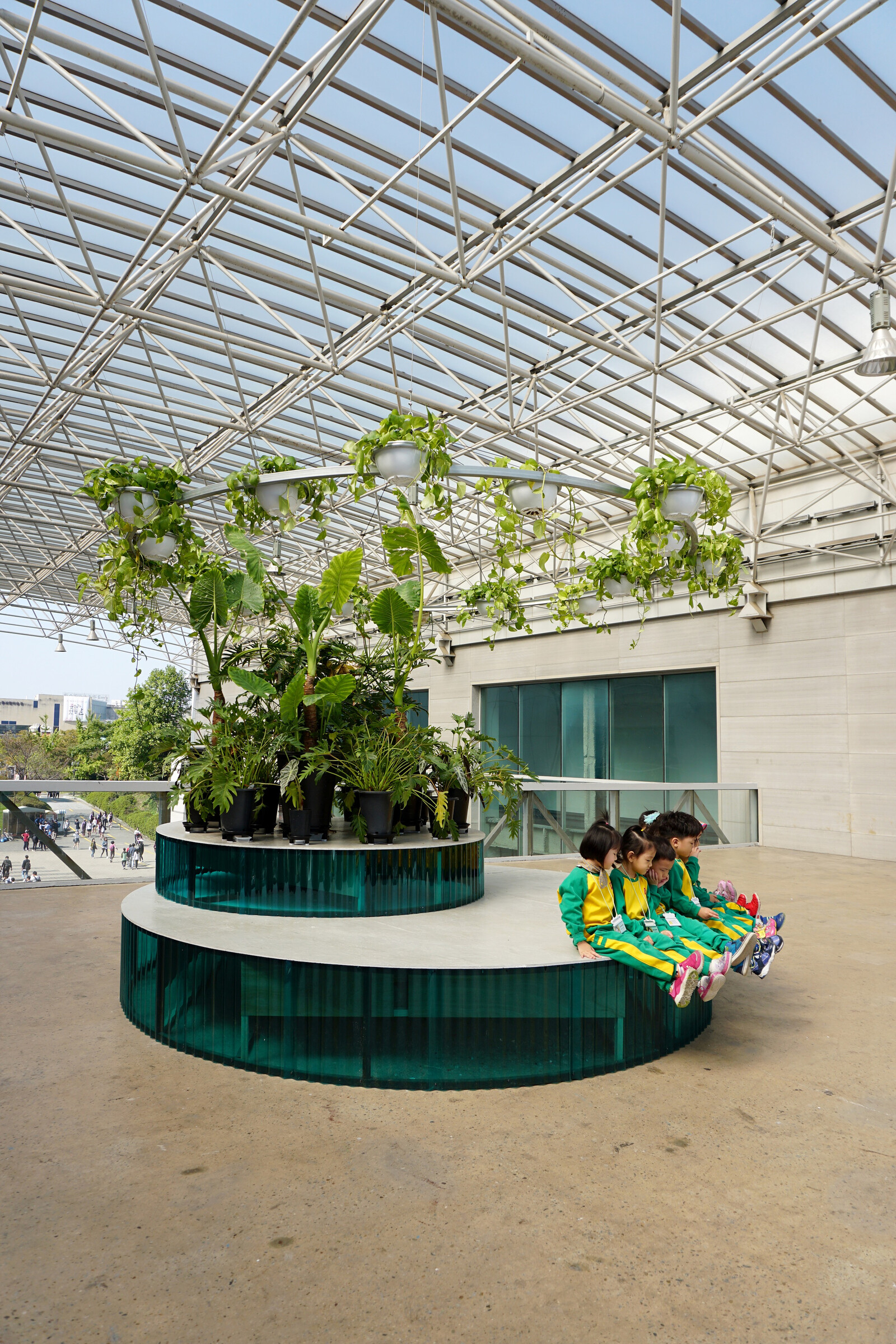Severed ears make for convenient plot points—they signal instant mystery. An example: To whom did the pair of ears in Hieronymus Bosch’s Garden of Earthly Delights (1490–1500) once belong, and what in the actual hell are they now? Yoked by an arrow and sandwiching a blade, this pictorial element of the Medieval altarpiece is the act of ear amputation compressed into a single, mythological being. The Christian context makes for an easy segue to another moment of religious conjuring: Christ’s last miracle before crucifixion; the replacement of Malchus’s ear (lopped off by Simon Peter) in the Garden of Gethsemane. Recounted in the Gospels but considered apocryphal by some, the story is doubtless a parable about the consequences of blasphemy. It provides a clue as to the meaning of Bosch’s monster.
Hear no evil.
Ear amputation is the most agreeable, maybe the most forgivable, type of mutilation to the human face. Unlike eye gouging or nose cutting, ear amputation creates a surface wound; the orifice is neither widened nor deepened, and the inner organ retains its basic function. Ear amputation is also the furthest logical extent to ear yanking, that schoolyard punishment exerted by bullies and authorities alike. Perhaps this is why it is customary to chop an ear off a hostage and send it to their family. The action mimics a universal sign of punitive action, and it highlights the parents’ and criminals’ respective roles as guardians responsible for their charge’s fate.
Was it not an ear in the mail that finally convinced John Paul Getty Jr. and Abigail Harris Getty that the ’Ndrangheta indeed kidnapped their teenage son John Paul Getty III for ransom—a ransom that the family’s patriarch, the John Paul Getty, “richest man the world,” was unwilling to pay? I overheard a fellow attendee discussing this dark episode with his own son during a tour of the Getty Center gardens in Los Angeles last March. When asked about the aftermath, the man replied, “I guess it turned out okay.” It did not. John Paul Getty III never fully recovered from the ordeal after his release, and, in 1981, his drug and alcohol abuse led to a stroke that disabled him for the rest of his life.
The guide on the Getty Center gardens tour defined gardens as “an arrangement of nature for human refreshment,” but I struggled to reconcile the fabulous horticultural display with the idea of a mutilated grandson for the sake of being refreshed by a Razzleberri. If anything, the nearby cluster of pollarded London plane trees offered the closest analogue for a truce between these incommensurate thoughts: their extreme pruning evokes the oil baron’s severe restraint; their excessive scarring recalls those incurred by his heir. A pattern emerges in which ears are yoked to gardens by cruelty.
The tour concluded with The Bowl Garden designed in 1997 by painter and installation artist Robert Irwin. To access the area, which is a scooped-out terrace dominated by an ornamental pool and the odor of variegated society garlic, the visitors zigzag through plane trees growing unrestricted—or, in the docent’s words, “helter-skelter.” I was surprised to hear this particular turn of phrase considering we stood a few miles from where followers of Charles Manson murdered five people on the night of August 8, 1969, in the name of Helter Skelter, Manson’s race war apocalypse prophecy. It was as though the words were in the air, born by the lingering frequencies of that brutal crime. Violent legends persist with undying tenacity.
Among its treasures, the Getty Center owns works by an artist whose legacy similarly turns on violence: Vincent van Gogh. According to a didactic wall panel in the museum’s West Pavilion, Van Gogh painted the finest piece in the collection, Irises, “in the garden of the asylum at Saint-Rémy, where he was recuperating from a severe attack of mental illness.” Produced in 1889, the same year as Self-Portrait with Bandaged Ear and Self-Portrait with Bandaged Ear and Pipe—Van Gogh’s own records of his automutilation—Irises smacks of art therapy, but the blossom’s auricular forms echo the trauma that led to the artist’s convalescence.
In the text “Sacrificial Mutilation and the Severed Ear of Vincent Van Gogh,” (1930) Georges Bataille linked the artist’s madness and self-injury to ancient ecstatic rituals that exploded the limits of human sensory perception. Bataille described an esoteric “double bond uniting the sun-star, the sun-flower, and Van Gogh,” and argued that, much like a sunflower or an acolyte of some ancient solar cult, “Van Gogh’s life was dominated by the overwhelming relations he maintained with the sun.” In his view, Van Gogh’s transgressive automutilation mimicked the creative actions of the ancient gods, whose world creating and world changing powers sprang from chaotic (i.e., helter-skelter) self-sacrifice.1
Bataille disdained flowers though, and one wonders if Van Gogh would have grabbed his attention had the artist not cut his own face. Maybe the correlation between Van Gogh and sunflowers is evidence enough. In “The Language of Flowers” (1929), Bataille writes, “it matters little, in fact, that the columbine is the emblem of sadness, the snapdragon the emblem of desire, the waterlily the emblem of indifference. […] It seems opportune to recognize that such approximations can be renewed at will.” For Bataille, floral symbolism has no substance, and flowers themselves, when separated from their sentimental trappings, are obscene, “spoiled in their centers by hairy sexual organs.” Far be it for me to suggest that Van Gogh’s paintings have a “hairy” quality, but for Bataille, the sunflower paintings instigate meditations on obscenity as much as any real flower could.2
Bataille wrote “The Language of Flowers” during the same fruitful period as his classic beach book Story of the Eye (1928) and equally chipper The Solar Anus (1931). The epoch was also exceptionally productive for Bataille’s contemporary Edward Steichen, whose 1936 exhibition at the Museum of Modern Art in New York, “Steichen Delphiniums,” revealed the photographer’s preoccupation with flowering plants and established him as the world’s leading expert on delphinium breeding. For eight days in June, Steichen packed three of MoMA’s rooms with “between five hundred and one thousand delphinium stalks” of his own propagation—an installation that surely would have sent Bataille reeling.3
Yet Steichen’s own stance on flowers spurned convention. He believed flowers encouraged aesthetic reflections in daily life and, therefore, possessed a social utility that distinguished them from superficial, ambient decoration and also separated them from the institutional “twilight zone of the ‘art for art’s sake’ school [where] all things are stillborn.” He spoke about his delphinium breeding program with crude fervor, making allusions to Hitler, eugenics, and the eradication of inferiority. “Steichen Delphiniums” called attention to the weaknesses of modern art as he perceived them and highlighted the museum’s limitations as a venue for staging organic matter, Steichen’s answer to the art for art’s sake problem, as art.
That the delphinium is toxic to humans is ironic in a context so driven by humanist concern, but the greater irony is that it is not as toxic as the idea of exhibiting flowers was to some. The significance of flowers, then as now, is linked to traditions, tastes, and class distinctions. To appreciate fine vegetation means to understand, if not possess, “well-bred” decorum, to understand when and how to navigate manicured botanical refreshment. To have an appreciation for fine vegetation does not guarantee an appreciation of art, much less Steichen’s peculiar thesis on aesthetic utility. With “Steichen Delphiniums,” Steichen attempted to attract and outmaneuver the highfalutin flower crowd and the art-world intelligentsia, but the exhibition never fully escaped its associations with the ornamental, nor did it succeed in upstaging the avant-garde developments underway at the time.
Looking past Steichen’s precious cut blooms, what can one make of live plants, flowering or otherwise, situated in a gallery on a casual, ornamental basis? A plant in a gallery implies civility. Perhaps this is behind the growing curatorial trend involving art and ecological remediation, of which the recent Manifesta 12, titled “The Planetary Garden,” in which Palermo’s Botanical Garden was a central exhibition venue, is but one example.
Armed with Michael Pollan’s 2013 New Yorker article “The Intelligent Plant,” one can appreciate the role of plants in contemporary galleries to a greater extent.4 Pollan details several theories regarding plants’ abilities to learn, communicate, and remember. Some hypotheses suggest that plants can read human minds and use echolocation to comprehend their surroundings. Could this mean that the orchid from IKEA, sitting by the guest book no one signs, is the most observant gallery attendant of all—not only aware of the works on view but forming something akin to a critique?
If plant opinion determined exhibition design, the results might look like Céline Condorelli’s Zanzibar (2018–ongoing), an interactive public sculpture based on eighteenth-century museum and garden benches. Installed at the office building R7 in London’s “regenerated” Kings Cross district, Zanzibar “provides a place to rest or converse, for people to make their own performances, whether planned or impromptu; or simply for them to sit on and watch the world go by; to read, to wait, to talk together.”5 It curves with the grace of a helix rim. Although it invites public intimacy and conversation, its purpose is higher than idle chatter. It is a place where one goes to listen—and consent to a little interspecies eavesdropping.
Condorelli’s installations are at the intersection between art and architecture. An earlier work like À Bras Le Corps—with Philodendron (to Amalia Pica) (2014), prominently exhibited in her 2014 show “Intentional Objects (In Accidentally Specific Appearances)” at London’s Chisenhale Gallery, illustrates this purpose. Anticipating Zanzibar, À Bras Le Corps [Head On] is a three-tiered structure laden with philodendrons that offers a place for people to interact, providing a locus for “transformative interspecies communication” between plants and humans.6 Zanzibar concentrates the artist’s efforts on this front more than À Bras Le Corps by functioning as an open, public forum that promotes cross-pollinating subjectivities, both human and non.
The artist shares the understated aesthetic and focus on anthropocentric constraint in a complex urban setting of Nancy Holt’s Dark Star Park (1984). In aerial photographs, the park is barely distinguishable from a crazy golf course. But at ground level, the concrete spheres and metal poles that comprise the sculptural array are anything but miniature. The government of Arlington County, Virginia, commissioned Dark Star Park as part of an urban renewal initiative. Holt’s structure couches local history in a cosmological design: every sunny August 1st at 9:32 a.m., the shadows of two spheres and four poles align with ground markers to commemorate the day when the area’s founder, William Ross, purchased the land. The park’s grassy swaths make for a diminutive floral presence, but they are no less integral to the visitor’s experience than the tropical broadleaves of Zanzibar or the heliotrope in the Getty Center’s Bowl Garden.
Holt and Condorelli work from a distinctly environmental perspective that chimes with ecological artworks such as Mel Chin’s Revival Field (1991–ongoing) or David Nash’s Ash Dome (1977–ongoing). Chin’s “garden” of hyperaccumulator plants in a toxic landfill also used basic geometry to signal the making of a conscious environment, in this case a healthful plot in the middle of the former Pig’s Eye landfill in St. Paul, Minnesota. Nash’s circle of ash trees, growing into a sanctuary though stricken by disease, demonstrates the virtues of patience and the development of communality on a timescale imperceptible to humans, yet impossible without human intervention. Condorelli, Holt, Chin, and Nash’s works carry the same hope for abundance and wish for survival as an ear of corn snapped from the stalk during harvest—a promise of renewal after a passage through hell.
Georges Bataille, “Sacrificial Mutilation and the Severed Ear of Vincent Van Gogh,” in Visions of Excess: Selected Writings, 1927-1939, ed. Allan Stoekl (Minneapolis: University of Minnesota Press, 1985), 61–72.
Georges Bataille, “The Language of Flowers,” in Visions of Excess, 10–14.
Ronald J. Gedrim, “Edward Steichen’s 1936 Exhibition of Delphinium Blooms: An Art of Flower Breeding,” in Signs of Life: Bio Art and Beyond, ed. Eduardo Kac (Cambridge and London: The MIT Press, 2007), 347.
Michael Pollan, “The Intelligent Plant,” New Yorker (December 15, 2013), https://www.newyorker.com/magazine/2013/12/23/the-intelligent-plant.
Céline Condorelli, “Zanzibar (2018-ongoing),” Céline Condorelli’s website, http://www.celinecondorelli.eu/selected-work/zanzibar/.
Céline Condorelli, “Intentional Objects (In Accidentally Specific Appearances) (2014),” Céline Condorelli’s website, http://www.celinecondorelli.eu/selected-work/intentionals/.
